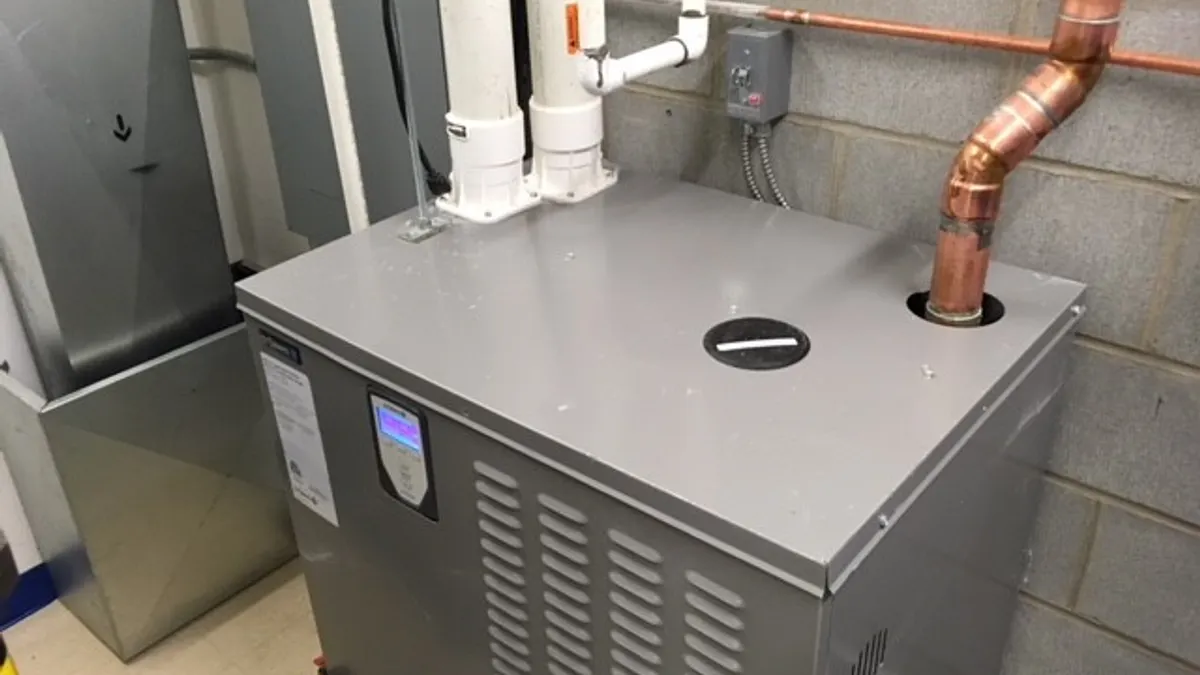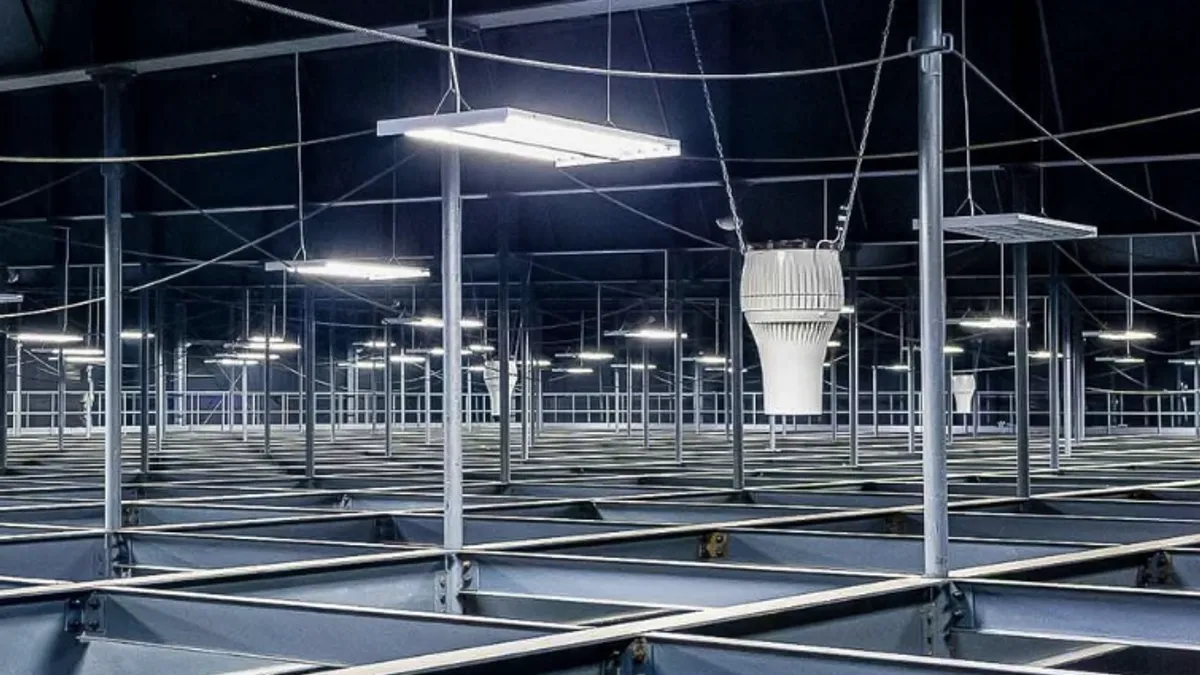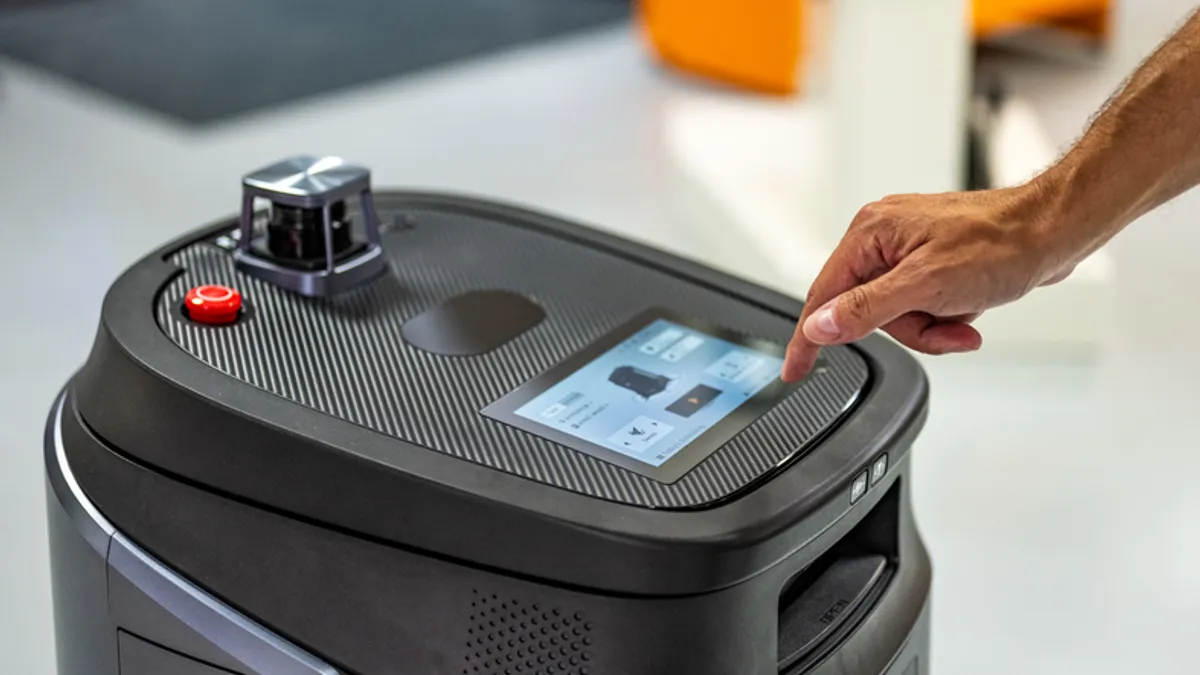Humidity has a significant impact on HVAC system efficiency and yet controlling it is one of the most overlooked strategies for improving building performance, says Duncan Curd, global business development leader at DriSteem, which designs and manufactures humidity control technologies.
High humidity can lead to condensation, corrosion and electronic failures in critical systems and devices, Curd says. Persistent high humidity levels fosters mold and microbial contamination in hidden areas such as ductwork, ceiling cavities and behind walls, "posing long-term risks to asset integrity and occupant health,” Curd said. Low humidity also has its problems, causing static electricity buildup and warping, cracking or delamination in materials like wood, paper and adhesives. “
“For example, as indoor air becomes dry during winter, the heating system must compensate by working longer to maintain comfort, often leading to overuse,” Curd told Facilities Dive in an email. “Conversely, in the summer, high humidity levels make it more difficult for cooling systems to remove moisture and maintain a comfortable environment, placing additional strain on chillers and air conditioning units.”
Fluctuating or extreme humidity levels can also compromise the integrity of equipment, materials and interior finishes over time, leading to especially significant consequences in facilities with specialized environments like data centers, hospitals, museums and manufacturing facilities, Curd said.
Investing in precise humidity controls can help to safeguard assets, preserving their functionality and appearance over time, Curd said. Consistent management can help to extend the service life of HVAC systems as well as their furnishing and finish materials by reducing the wear and stress caused by environmental fluctuations, he said.
“The long-term return on investment is substantial,” he said. ”Facility managers can expect reduced repair and replacement costs, fewer unexpected equipment failures, and minimized operational disruptions.” In environments that rely on controlled conditions, such as healthcare, archival storage, or precision manufacturing, effective humidity control also reinforces stakeholder confidence in the building’s reliability and environmental quality.”
Humidity control strategies, technologies
The most important step in achieving optimal indoor conditions is to install, or upgrade, humidification and dehumidification systems capable of maintaining indoor relative humidity within the recommended 40% to 60% range, Curd said.
Then, facility managers must conduct continuous monitoring to ensure the performance and responsiveness of humidity control equipment. “Real-time data helps operators detect deviations from setpoints, quickly address system malfunctions, and adapt to seasonal or occupancy-related changes,” according to Curd.
Choosing the right humidity control strategy is critical, Curd said. One option is to integrate demand-driven humidity control systems with a building automation system, which enables HVAC systems to respond to real-time data from humidity and temperature sensors by adjusting humidification or dehumidification outputs based on occupancy, outdoor conditions and indoor setpoints, he said.
Another best practice is to integrate humidification directly into air handling units, he said, noting that distributing steam through a central AHU allows for tighter control of thermal and moisture loads, improving temperature balance and reducing the overall demand on heating and cooling equipment.
In addition, it is important that facility managers consider which technologies they deploy. Modern options, like high-efficiency, condensing gas-to-steam humidifiers and high-efficiency electric resistive units, can offer greater control and performance while incorporating features like smart drain cycles, modulating output and water-saving technologies, Curd said.
Adiabatic systems, such as high-pressure atomizing and evaporative humidifiers, offer another energy-efficiency option by using the natural cooling effect of water evaporation, “making them ideal for facilities looking to reduce energy consumption while managing both humidity and temperature,” Curd said.
By implementing humidity control systems, operators can help reduce energy use, extend equipment life and minimize the need for frequent service, providing a more efficient, comfortable and sustainable building environment in the long run, he said.
“Ongoing maintenance of humidity control equipment is equally critical. Facility staff or service providers should routinely inspect key components such as steam dispersion tubes, drain cycles, water level sensors, and humidifier tanks. This not only maintains consistent output and energy efficiency but also extends the life of the equipment and ensures proper functionality,” Curd said.
“Preventive maintenance reduces the likelihood of costly failures and helps avoid conditions like microbial buildup, scale deposits, or system leaks that can negatively impact air quality and mechanical performance,” he said.






















